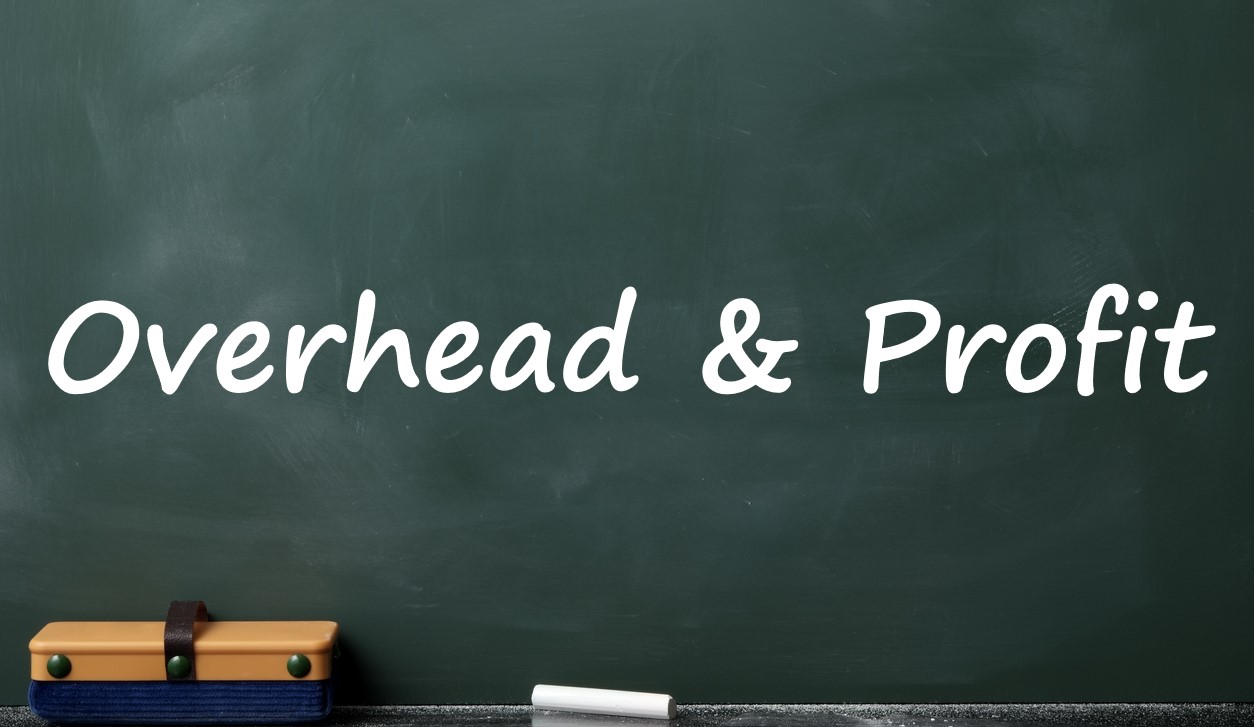Below is testimony I elicited from a Nationwide Insurance representative during a recent deposition:
Q. Are you familiar with Overhead and Profit?
A. Yes.
Q. Okay. And when does Nationwide include overhead and profit in its estimates?
A. When it is reasonably necessary to assume that a general contractor is needed to facilitate the repairs.
…
Q. Okay. Now, going to the back of this estimate, it appears that Nationwide did not apply overhead and profit in terms of the estimate that It produced. Can you explain why Nationwide decided not to include overhead and profit on this estimate?
A. Can we – can I talk to counsel a second?(A discussion between the attorneys was had wherein the witness was instructed to answer the question)
A. Okay. All right. It appears that we missed it.
Q. Okay.
A. Yeah There’s – there’s no reason why profit and overhead would not have been included on this estimate.
One of the first things I look for in an insurance estimate is whether Overhead and Profit (“O&P”) was paid. As a bit of background, overhead encompasses fixed costs for any business such as salaries, and office rent, and profit is the excess of the selling price of goods over cost. Xactimate includes three categories of overhead: general, job-related, and job-personnel overhead. General overhead pertains to expenses incurred that cannot be attributed to individual projects (e.g., office rent, salaries); job-related overhead pertains to expenses that can be attributed to a project, but not a specific task (e.g., project managers and restroom facilities); and job-personnel overhead pertains to non-wage related expenses incurred associated with own employees performing the work (e.g., vehicle costs and uniforms).
In Xactimate, general overhead is not included in the unit pricing. It is added to the estimate as a percentage of the total big along with the appropriate profit margin which, together, makes up O&P. Job-related overhead is added in separate line items and job-personnel overhead is included within the labor overhead portion of the line items.
The key question is: “When is general overhead and profit warranted?” The answer, at least in Pennsylvania, comes from the Pennsylvania Superior Court cases of Gilderman v. State Farm1 and Mee v. Safeco.2 Mee is the focus of this blog post.
Mee involved a typical homeowner’s insurance dispute that arose from a toilet overflow. Mee had a Replacement Cost Policy. The insurance company inspected the damage and issued a payment that did not include consideration for overhead and profit. Safeco refused to pay overhead and profit due to its contention that (1) it wasn’t warranted because of the work involved and (2) the insured wasn’t going to incur the costs of a general contractor as he did the work himself. The carrier was awarded Summary Judgment at the trial level and Mee appealed to the Superior Court of Pennsylvania.
In reversing the trial court’s decision, the appellate court listed certain factors that need to be considered in payment of O&P. The factors include (1) the extent of the property damage, (2) the number of trades required to repair the damage, and (3) expert evidence of building industry standards regarding the correlation between use of a general contractor and the number of trades required to repair damage. In weighing those factors, the court found that Summary Judgment should be reversed and remanded because the record established that as many as six (6) trades would be needed to repair the damage and Mee also presented expert opinions as to when use of a general contractor is reasonably likely.
The Mee court also looked to Gilderman in holding it didn’t matter that the insured did the work himself and was not going to incur the costs of a general contractor. The court, instead, focused on what the carrier agreed to pay the insured prior to actual repair or replacement. In this instance, the carrier agreed to pay actual cash value, which means replacement cost less depreciation. In coming to its holding, the court found that repair and replacement costs include O&P where use of a general contractor would be reasonably likely, regardless of whether the costs would be incurred.
However, as a caution to the above, in Kurach v. Truck Insurance Exchange,3 the Pennsylvania Supreme Court has since held that an insurance carrier can withhold O&P if the insurance policy specifically states that the carrier will be withholding O&P from an actual cash value payment.
I gave a presentation on the Current State of Overhead and Profit at the Professional Public Adjuster’s Association of New Jersey’s 2020 Fall conference. If anyone would like a copy of that presentation, feel free to reach out to me at dballard@merlinlawgroup.com.
_________________________________
1 Gilderman v. State Farm Ins. Co., 437 Pa. Super. 217 (Penn. App. 1994).
2 Mee v. Safeco Ins. Co. of America, 908 A.2d 344 (Penn. App. 2006).
3 Kurach v. Truck Ins. Exch., 235 A.3d 1106 (Penn. 2020).




